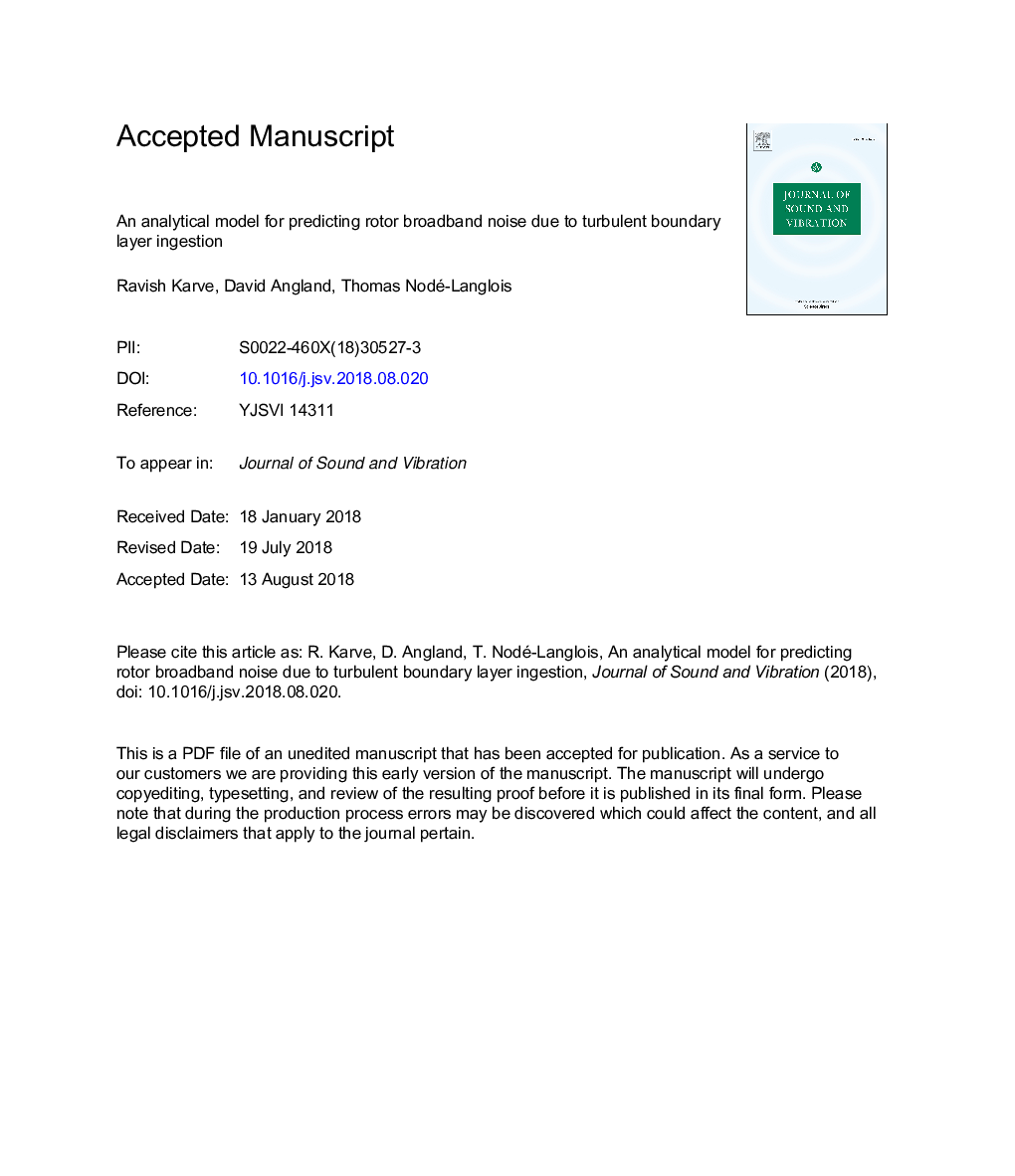| کد مقاله | کد نشریه | سال انتشار | مقاله انگلیسی | نسخه تمام متن |
|---|---|---|---|---|
| 10150732 | 1664487 | 2018 | 43 صفحه PDF | دانلود رایگان |
عنوان انگلیسی مقاله ISI
An analytical model for predicting rotor broadband noise due to turbulent boundary layer ingestion
ترجمه فارسی عنوان
یک مدل تحلیلی برای پیش بینی نویز پهنای باند روتور به علت جذب لایه مرزی آشفته
دانلود مقاله + سفارش ترجمه
دانلود مقاله ISI انگلیسی
رایگان برای ایرانیان
کلمات کلیدی
سر و صدا نصب روتور را باز کنید ناهمسانگردی، روش تصاویر نویز لنز لنز،
ترجمه چکیده
یک مدل تحلیلی نیمه تجربی توسعه یافته است که پیش بینی می کند نویز تولید شده توسط یک روتور با استفاده از یک لایه مرزی در مجاورت دیوار سخت. منبع نویز خوردگی لایه مرز روتور یک منبع مهم است که شامل مواردی باشد که یک روتور در نزدیکی یک بدنه هواپیما نصب شود. این مورد برای یک دم رو به رو به رو می باشد. در این مقاله سه مدل برای مدل پیش بینی این منبع نویز ارائه شده است. اولین اصطلاح، روش تصویر است که برای مدل سازی بازتاب های صوتی سخت دیوار استفاده می شود. پسوند دوم یک طیف سرعت بی نهایت است که برای مدل سازی آشفتگی لایه مرزی مورد استفاده قرار می گیرد. پسوند سوم، عددی است که برای بارگیری جزئی از روتور حساب می شود، فقط بخشی از آن در لایه مرزی غوطه ور است. مدل آشفتگی آنیزوتروپیک همگن استفاده شده، ساده سازی آشفتگی واقعی برخورد روتور در لایه مرزی است. در واقع، آشفتگی در لایه مرزی در جهت دیوار به طور همگن نیست. بنابراین، در حالی که مقیاس طول انتگرال در جهت جریان جریان می تواند از داده های تجربی یا عددی تعریف شود، مقیاس طول انتگرال در جهت دیوار به طور طبیعی باید تجربی انتخاب شود. مدل نویز روتور با مقایسه پیش بینی های آن با داده های تجربی در سه نسبت پیش بینی متفاوت مورد تایید قرار می گیرد. سپس مدل نویز روتور پیشنهاد شده برای بررسی اثر دیوار سخت بر روی طیف سر و صدا مورد استفاده قرار می گیرد. سختی دیواره نسبت به هدایت جریان بالاتری نسبت به تمام شرایط کارکرد روتور، هدایت جریان پایین را تحت تاثیر قرار می دهد. تغییر نسبت پیشروی روتور به طور قابل توجهی تاثیری را که دیوار سخت روی طیف سر و صدا دارد، تغییر نمی دهد.
موضوعات مرتبط
مهندسی و علوم پایه
سایر رشته های مهندسی
مهندسی عمران و سازه
چکیده انگلیسی
A semi-empirical analytical model is developed that predicts the noise produced by a rotor ingesting a boundary layer in proximity to a hard-wall. The rotor boundary layer ingestion noise source is an important source to include when a rotor is installed close to an aircraft fuselage. This is the case for a tail mounted counter rotating open rotor for example. This paper presents three extensions to Amiet's simplified rotor noise model to predict this noise source. The first extension is the method of images, which is used to model the acoustic reflections of the hard-wall. The second extension is an anisotropic velocity spectrum, which is used to model the boundary layer turbulence. The third extension is a numerical switch to account for the partial loading of the rotor as only a part of it is immersed in the boundary layer. The homogeneous anisotropic turbulence model used is a simplification of the actual turbulence the rotor encounters in the boundary layer. In reality, the turbulence in the boundary layer is not homogeneous in the wall-normal direction. Therefore, while the integral length scale in the streamwise direction can be determined from experimental or numerical data, the integral length scale in the wall-normal direction must be chosen empirically. The rotor noise model is validated by comparing its predictions to experimental data at three different advance ratios. The proposed rotor noise model is then used to investigate the effect of the hard-wall on the noise spectrum. The hard-wall affects the downstream directivity more significantly than the upstream directivity for all the rotor operating conditions. Changing the advance ratio of the rotor does not significantly alter the effect that the hard-wall has on the noise spectrum.
ناشر
Database: Elsevier - ScienceDirect (ساینس دایرکت)
Journal: Journal of Sound and Vibration - Volume 436, 8 December 2018, Pages 62-80
Journal: Journal of Sound and Vibration - Volume 436, 8 December 2018, Pages 62-80
نویسندگان
Ravish Karve, David Angland, Thomas Nodé-Langlois,
